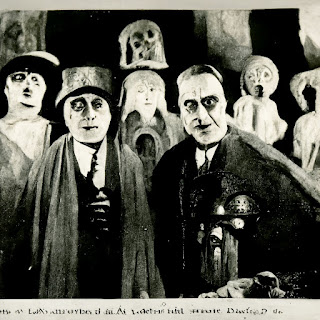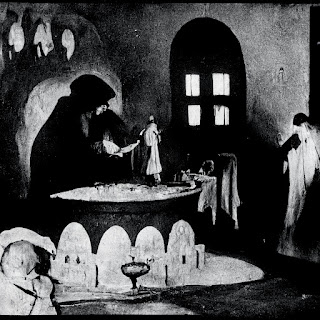“Rhythmus 21” and “Diagonal-Symphonie” are by two close
colleagues associated with Dada – Hans Richter and Viking Eggelin. Both were
heavily inspired by music –using terms like counterpoint and orchestration, and
referring to elements of any given work
as themes or instruments.
"Born in Sweden, Eggelin travelled around Europe and
settled in Paris a few years before WW1 where
he dedicated himself to finding a universal
language of abstract symbols, which he would draw onto large scrolls of paper. Eggeling’s Diagonal Symphonie, took three or four years to make and was a step
towards “an all embracing system based on the mutual attraction and repulsion
of paired forms”. The name Eggeling gave for that system was Thorough Bass of
Painting - thorough bass (also known as
basso continuo, or figured bass) is yet another term from music, referring to an
approach that flourished in the 17th and 18th centuries
involving keyboard improvisations over a
stable bassline. Bach would be the supreme exponent there, at least until The
Doors! Eggeling believed that film would reach its highest potential as a
completely non-representational form with no reference to the literary or
theatrical (so there goes plot, character, motivation) or indeed the natural world.
"Richter’s Rhythmus 21 is black-and-white, but with the tragically lost later film Rhythmus
25, he embarked upon the “orchestration of colour” and devised a system of
notation on graph paper, which according to the critic Brian O’Doherty promised
“a method of composing films according to scores, where both musical and visual
consideration could come into play” - SR, lecture given at the Tate Modern
Stills from an unfinished Han Richter film about the life of Gustav Meyrink, to be titled The House at the Last Lantern
(via Lanny Quarles)





























































































No comments:
Post a Comment